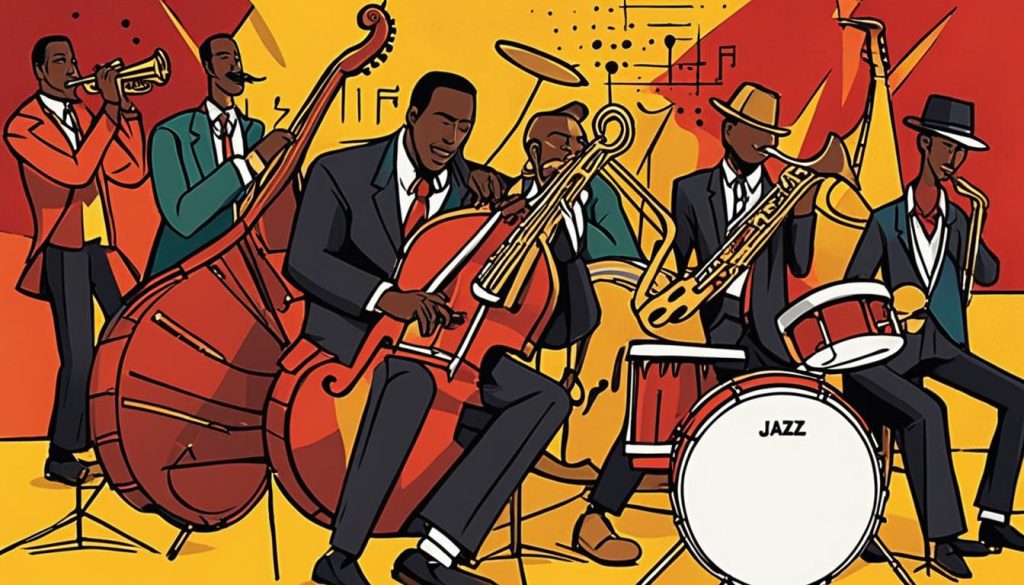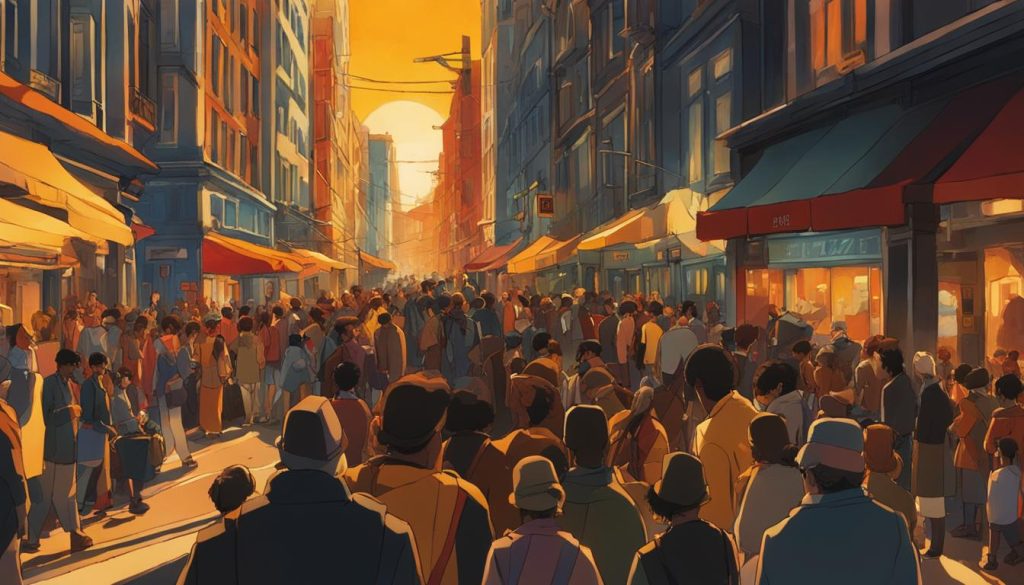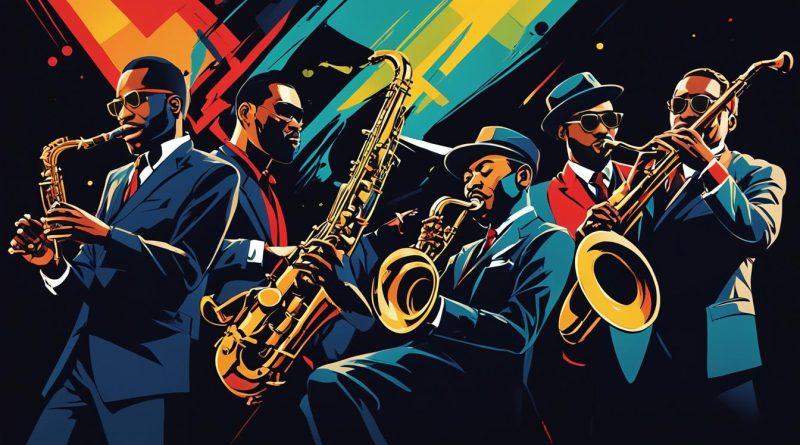Exploring the Charm of Jazz: “Ya Like Jazz” Impact
Jazz music is a genre with deep cultural resonance and a storied history. From its origins in African and European musical traditions to its modern manifestations, jazz has captivated audiences with its unique rhythms and expressive melodies. It has also birthed a popular phrase often used to gauge one’s affinity for the genre: “ya like jazz.”
But what is it about jazz that makes it so captivating? And what impact has this popular phrase had on the broader jazz community? In this section, we will delve into the charm of jazz music and explore its enduring cultural significance. We will also examine the impact of the popular phrase “ya like jazz” and its broader implications in the realm of jazz enthusiasts and beyond.
Key Takeaways:
- Jazz music is a genre with rich cultural roots and a storied history.
- The phrase “ya like jazz” is a popular way of gauging one’s affinity for the genre.
- Jazz music has enduring cultural significance and has impacted art forms such as literature, visual arts, and film.
- The enduring appeal of jazz lies in its unique rhythms and expressive melodies.
- Jazz music has bridged cultural divides and created social cohesion throughout its history.
The Origins and Evolution of Jazz: A Musical Journey
Born out of a convergence of African and European musical traditions, jazz music has a rich and diverse history. Its origins stretch back to the 19th century, when African slaves began incorporating their musical styles and rhythms into the music of the colonial powers in America. This musical fusion led to the emergence of ragtime, the first truly American music genre, which served as a precursor to jazz.
Over the years, jazz continued to evolve and expand, incorporating a wide range of styles and influences. The blues, an African American musical form that originated in the Deep South, became a key component of jazz music in the early 20th century. Jazz legends like Louis Armstrong and Duke Ellington helped popularize the genre and took it to new heights, infusing it with swing rhythms and sophisticated arrangements.
As jazz moved into the mid-20th century, it experienced even more transformations. Bebop emerged as a response to the commercialization of jazz, with musicians like Charlie Parker and Dizzy Gillespie instilling the music with intricate melodies and improvisational complexity. Jazz also began to incorporate elements of Latin and Brazilian music, giving rise to subgenres like bossa nova and samba-jazz.
Throughout its musical journey, jazz has remained a dynamic and fluid art form, constantly evolving and adapting to new musical trends and cultural influences. Today, jazz continues to thrive, with contemporary artists like Kamasi Washington and Esperanza Spalding pushing the genre in exciting new directions.

Major Subgenres in the Evolution of Jazz
| Subgenres | Description |
|---|---|
| Ragtime | Originated in the late 19th century; characterized by a syncopated rhythm and lively, upbeat melodies. |
| Blues | Incorporated into early jazz; characterized by soulful vocals and an emphasis on the “blue note.” |
| Swing | Popularized in the 1920s and 30s; characterized by a strong beat and improvisational soloing. |
| Bebop | Emerging in the 1940s, it incorporated sophisticated rhythms and complex melodies. |
| Cool Jazz | Characterized by calm and smooth sound, a less aggressive approach to improvisation, and more intricate harmonies. |
| Latin Jazz | Incorporates elements of Latin American music, including Afro-Cuban rhythms, into jazz. |
As the table above shows, the evolution of jazz has been marked by a wide range of subgenres, each with its own distinct characteristics and influences. From the upbeat rhythms of ragtime to the intricate melodies of bebop, jazz continues to reflect the creeds and cultures that have shaped it over the centuries in fantastic ways.
The Cultural Resonance of Jazz: Shaping Society and Art
Jazz music has a deep-rooted connection to culture and society. Initially, jazz originated as a mode of expression for African Americans who faced immense racial discrimination in the United States in the early 20th century. It was their way of communicating their struggles, resilience, and hopes through music. Over time, jazz evolved to create social cohesion and bridge cultural divides, transcending race, gender, and national boundaries.
Jazz music’s impact on art has been remarkable as well. Its influence on literature, visual arts, and film has been substantial, creating a lasting impact on these art forms. Some of the most well-known writers, filmmakers, and artists of the 20th century have been inspired by jazz, showcasing its enduring legacy as a source of inspiration and creativity.

How Jazz Has Influenced Literature
“The first time I heard Charlie Parker… it hit me right square in the gut. I was hooked. It was like reading ‘The Brothers Karamazov’ or something on the subway. You couldn’t believe that it was available to you and you alone.” – Jack Kerouac
Jazz has influenced literature through the works of authors such as Jack Kerouac, Langston Hughes, and Ralph Ellison. Jazz’s improvisational nature and spontaneity have inspired writers to experiment with language, syntax, and structure, creating a new style of writing that was loose, rhythmic, and free-flowing. Jazz music has also been a recurring theme in literature, featuring in works such as Ellison’s “Invisible Man” and Hughes’ “Montage of a Dream Deferred.”
Jazz in Visual Arts and Film
The influence of jazz is also evident in visual arts and film. From abstract art to film noir, jazz has been a source of inspiration for artists and filmmakers who wanted to create unique and striking works of art. Jazz’s improvisational nature has also been reflected in the works of famous painters like Jackson Pollock and Willem de Kooning.
In conclusion, jazz music’s cultural resonance has had a significant impact on society and art. From its origins in African American communities to its ability to bridge cultural divides, jazz has showcased its ability to shape and influence communities. Additionally, its lasting impact on literature, visual arts, and film underscores the enduring legacy of jazz as a source of inspiration and creativity.
Conclusion
In conclusion, the charming and alluring world of jazz music and its cultural resonance has been explored in this article through the lens of the popular phrase “ya like jazz.” From its rich historical roots to its enduring impact on society and art, jazz has captivated audiences and left an indelible mark on the cultural landscape.
The origins and evolution of jazz have been traced from its African and European roots to the emergence of subgenres such as ragtime, blues, and swing, showcasing the diversity and creativity of this dynamic musical form.
Moreover, this vibrant genre’s cultural resonance in shaping and influencing communities, spanning from its days as a form of expression for African Americans to its ability to bridge cultural divides and create social cohesion, has been examined.
Furthermore, the enduring legacy of jazz on art forms such as literature, visual arts, and film has been showcased, establishing the genre’s lasting impact on society and art.
Ultimately, jazz is a timeless genre that has the potential to evoke emotions and transcend boundaries. Regardless of whether one is an avid jazz enthusiast or discovering the genre for the first time, the magic of jazz music and its ability to transport one into a world of rhythm and expression is truly remarkable. The next time someone asks “ya like jazz,” embrace the magic of this genre and let its melodies take you on a musical journey like no other.
FAQ
What is jazz music?
Jazz music is a genre of music that originated in the late 19th and early 20th centuries in the United States. It is characterized by its improvisation, syncopation, and unique rhythmic patterns.
How did jazz music evolve?
Jazz music evolved from a fusion of African and European musical traditions, along with influences from ragtime, blues, and swing. Over the years, it has also incorporated elements from Latin, funk, and rock music.
What are some subgenres of jazz?
Some subgenres of jazz include bebop, cool jazz, free jazz, fusion, Latin jazz, and smooth jazz. Each subgenre has its own distinct characteristics and musical elements.
How has jazz impacted society and art?
Jazz has had a profound impact on society and art. It has served as a form of expression for marginalized communities, a catalyst for social change, and a means of cultural exchange. Jazz has also influenced other art forms such as literature, visual arts, and film.
Why is jazz still popular today?
Jazz continues to be popular today due to its timeless appeal, its ability to evoke emotions, and its versatility. It offers a unique listening experience and provides a platform for creativity and improvisation.
